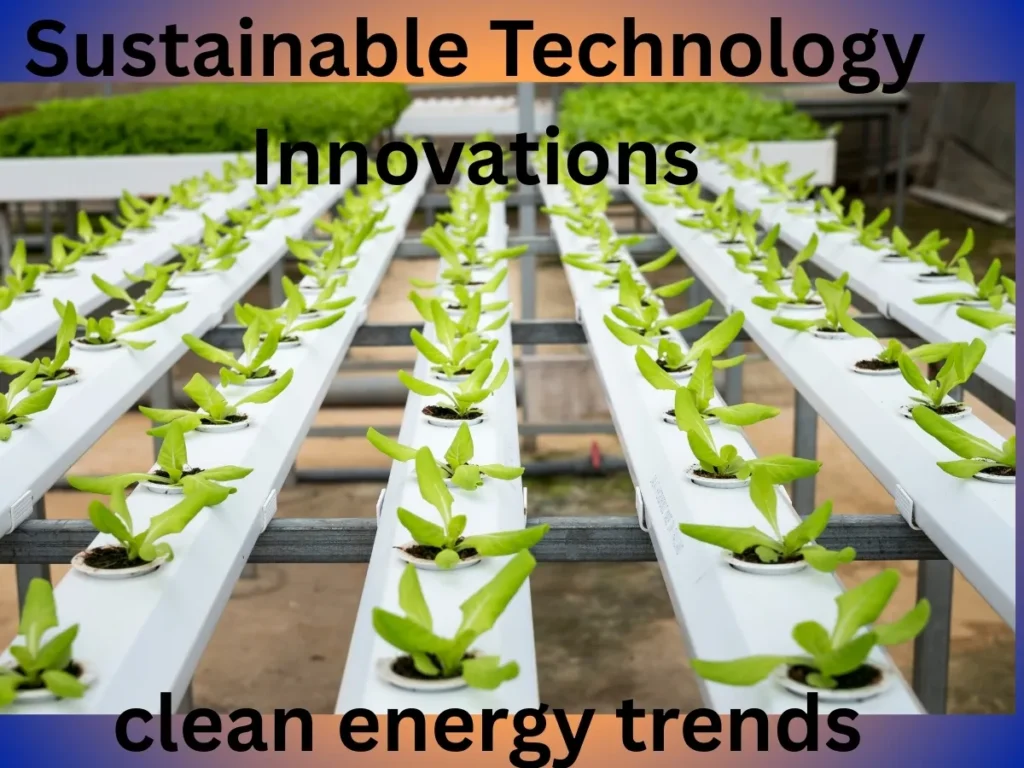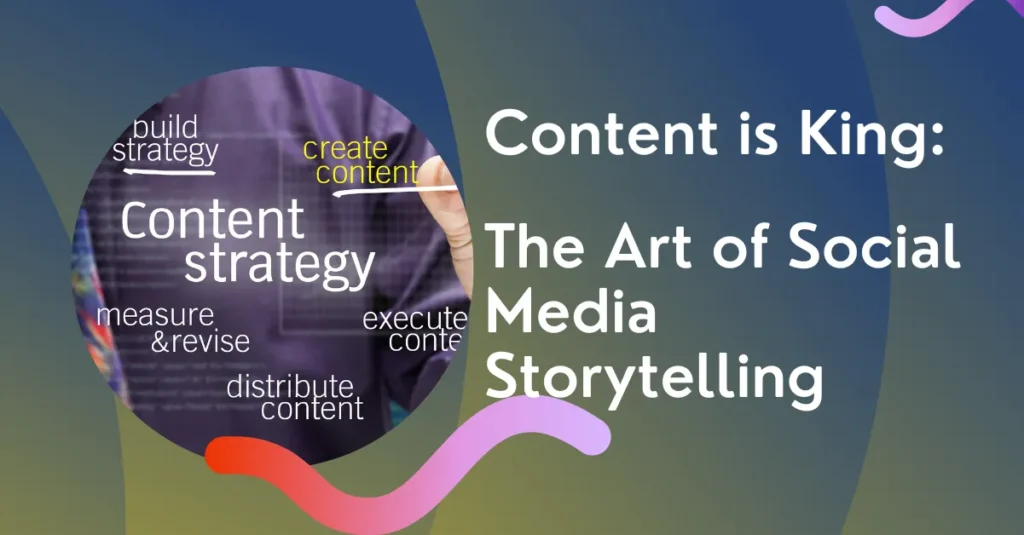Building a Smarter, Greener Future
In an era where climate change has shifted from a looming threat to a present-day crisis, the need for green technology and sustainable innovation is more urgent than ever. As cities expand, energy consumption soars, and natural resources dwindle, innovative solutions that prioritize environmental health and long-term resilience are not just welcome—they’re essential.
- Building a Smarter, Greener Future
- 🌍 What Is Green Technology?
From carbon capture technologies to AI-powered environmental monitoring, and from eco-friendly materials to the rise of smart cities, this post explores the cutting-edge developments shaping the future of sustainability.
🌍 What Is Green Technology?
Green technology refers to eco-friendly innovations aimed at reducing negative environmental impact through sustainable design, materials, and processes. Sustainable innovation involves not only inventing new tools but rethinking systems with longevity, waste reduction, and regeneration in mind.
☀️ Innovations in Climate Tech and Clean Energy
1. Solar Power
- Perovskite solar cells offer higher efficiency at lower costs.
- Floating solar farms help optimize space in dense areas.
- Transparent panels allow energy generation from building windows.
2. Wind Energy
- Floating offshore turbines provide access to stronger wind zones.
- AI and drones are enhancing turbine maintenance and uptime.
3. Energy Storage
- Advancements in solid-state and lithium-ion batteries improve grid storage.
- Hydrogen energy is becoming viable for large-scale industrial applications.
4. Carbon Capture Technologies
- Direct air capture removes CO₂ directly from the atmosphere.
- CarbonCure and others infuse carbon into concrete, locking it away.
- BECCS methods combine biomass with carbon capture to create negative emissions.
🧠 AI-Powered Environmental Monitoring
AI and machine learning are playing a pivotal role in predicting and managing climate events:
- Predictive models for wildfires, floods, and droughts.
- Satellite-based AI monitors deforestation, air pollution, and glacier melt.
- Smart agriculture uses AI to optimize irrigation, soil health, and yield.
🧱 Eco-Friendly Materials and Circular Design
1. Biodegradable & Recycled Materials
Examples include mushroom-based packaging, upcycled plastics, and construction materials made from ocean waste.
2. Green Building Technologies
- Self-healing concrete that reduces long-term maintenance.
- Cool roofing and CLT (cross-laminated timber) reduce energy use.
3. Circular Design
Encourages reuse, repair, and recycling in manufacturing and product design.
🏙️ Smart Cities and Sustainable Infrastructure
1. Green Mobility
- Electric vehicles (EVs) and wide-scale charger infrastructure.
- Micromobility: scooters, e-bikes, and rideshare apps.
- Mobility-as-a-Service (MaaS) integrates multiple transport options in one platform.
2. Smart Buildings
- Automated energy systems that reduce waste
- Net Zero and LEED-certified structures with advanced monitoring.
3. Waste Management Innovations
- Smart bins and AI sorting facilities for better recycling.
- Waste-to-energy systems converting trash into usable power.
4. Urban Green Spaces
- Green rooftops, vertical gardens, and biodiversity corridors.
- Climate-adaptive landscaping that resists flooding and heat.

📊 The Economic Impact of Green Innovation
- The green tech market is forecasted to hit $70.2 billion by 2030.
- Companies adopting sustainable practices gain investor confidence and consumer trust.
- ESG investing is rising, favoring brands with climate-forward strategies.
� SEO Tips for Green Tech Creators
Content creators should use these tips to rank higher in search engines:
- Use long-tail keywords: "AI in environmental monitoring," "eco materials for home," "carbon capture startups 2025."
- Create informative infographics and share on social platforms like Pinterest.
- Optimize alt tags and meta descriptions for all visuals.
Green tech and sustainable innovation are no longer futuristic—they are foundational. Whether it’s through **AI-driven solutions**, **clean energy**, or **circular materials**, our future depends on eco-conscious design and implementation.
Top 10 Smart Cities Leading the Green Tech Revolution
In the 21st century, smart cities are no longer a vision of the future—they’re reshaping how urban environments function today. The integration of green technology with data-driven urban planning is creating cleaner, more efficient, and more livable cities.
Below are the Top 10 smart cities that are leading the green tech revolution in 2025, driven by innovations in sustainability, innovative infrastructure, and eco-friendly policies.
1. Copenhagen, Denmark
Copenhagen is on track to become the world’s first carbon-neutral capital by 2025. The city uses smart energy grids, promotes cycling over driving, and integrates AI-powered waste management systems.
2. Singapore
Singapore uses advanced IoT sensors for traffic, pollution, and water management. Its Green Mark certification system ensures buildings meet sustainability goals, and the city continues to invest in vertical farming and desalination.
3. Amsterdam, Netherlands
With electric boats, a circular economy model, and intelligent lighting systems, Amsterdam is a model for smart, sustainable living. The city promotes carbon-negative architecture and urban greening initiatives.
4. Stockholm, Sweden
Stockholm employs an AI-driven public transportation system, clean energy from hydro and biofuels, and high recycling rates. It’s ranked among the greenest and most connected cities globally.
5. Helsinki, Finland
Through digital twin models and AI-powered urban planning, Helsinki reduces energy waste. It also implements innovative heating systems and encourages public use of green apps to track CO₂ footprints.
6. Barcelona, Spain
Barcelona’s innovative irrigation systems, urban greenery, and renewable energy policies place it at the forefront of green innovation. The city integrates sensor-based air quality management.
7. Oslo, Norway
Oslo offers tax breaks on EVs, powers public transport with hydropower, and uses blockchain for transparent energy sharing. It’s a model city for clean energy innovation.
8. San Francisco, USA
Known for its commitment to clean tech, San Francisco integrates solar-powered public transit, zero-waste initiatives, and smart energy grids in both residential and commercial zones.
9. Seoul, South Korea
Seoul’s smart city platform collects real-time data for urban sustainability. It includes energy-efficient buildings, AI-based flood control, and extensive EV charging infrastructure.
10. Dubai, UAE
Dubai’s Smart Dubai program includes solar-powered streetlights, AI-based environmental monitoring, and the development of self-sustaining smart districts like Sustainable City.
These smart cities demonstrate that sustainability and technology can co-exist. Through green innovation, data, and strategic governance, they’re leading the global transition toward climate resilience. If you’re interested in topics like eco-urbanism, smart energy systems, and AI in sustainability, these cities are the ultimate case studies.

Innovative Startups Tackling Carbon Emissions in 2025
As the world pushes toward net-zero goals, innovative startups are stepping up with cutting-edge carbon reduction technologies. These young companies are challenging conventional energy and manufacturing methods, focusing on carbon capture, reuse, and elimination. Here are some of the most exciting carbon-conscious startups to watch in 2025.
1. Climeworks (Switzerland)
A leader in Direct Air Capture (DAC) technology, Climeworks extracts CO₂ from the atmosphere and stores it underground. Its modular plants are expanding worldwide, offering scalable climate tech solutions.
2. Charm Industrial (USA)
Charm converts biomass into bio-oil, which can be injected underground, permanently removing carbon. Its mission: reverse climate change at the gigaton level.
3. Carbon Clean (UK/India)
This startup specializes in industrial carbon capture systems, particularly for cement, steel, and refining industries—sectors that are otherwise hard to decarbonize.
4. Heirloom Carbon (USA)
Heirloom accelerates natural carbon mineralization using limestone and a renewable-powered process. It’s one of the most energy-efficient DAC approaches on the market.
5. Twelve (USA)
Twelve transforms captured CO₂ into valuable products like jet fuel, car parts, and cleaning agents, using only water and renewable electricity—a proper carbon transformation startup.
6. Carbo Culture (Finland/USA)
This company produces biochar, a carbon-rich byproduct from pyrolyzed biomass, which sequesters CO₂ in soil while enhancing agriculture.
7. Planetary Technologies (Canada)
Using ocean alkalinity enhancement, Planetary captures CO₂ and enhances marine ecosystems. It’s pioneering the frontier of blue carbon.
8. Running Tide (USA)
Another marine innovation, Running Tide, grows seaweed and sinks it to the deep ocean, effectively locking carbon for centuries. The process is scalable and nature-aligned.
9. Noya (USA)
This startup retrofits existing cooling towers to capture carbon directly from the air and sell carbon credits to businesses aiming to offset emissions.
10. Verdox (USA)
Verdox’s electro-swing adsorption uses electricity to capture CO₂ selectively. The method is modular, energy-efficient, and ideal for point-source emissions.
Why These Startups Matter
These companies address carbon emissions in sectors ranging from transportation and construction to agriculture and manufacturing. They are:
- Scalable
- Science-driven
- Funded by impact-focused investors
- Positioned at the heart of the climate tech ecosystem
Conclusion
The race to solve climate change will be led not only by governments or legacy companies, but also by nimble, inventive startups. These organizations are redefining what’s possible in carbon management and clean energy, making them vital players in the green tech revolution.



